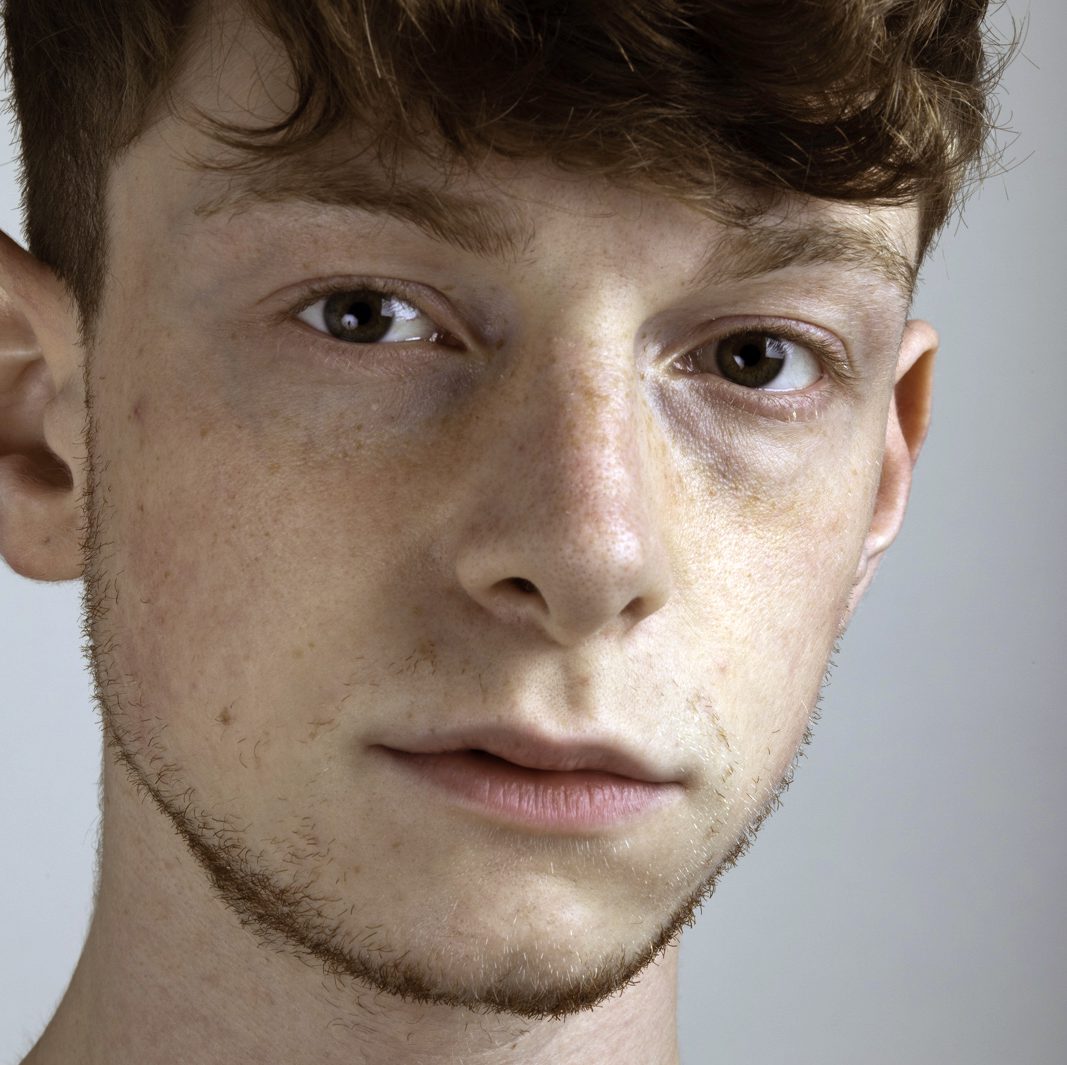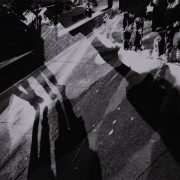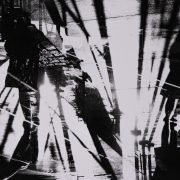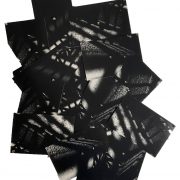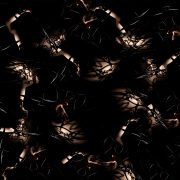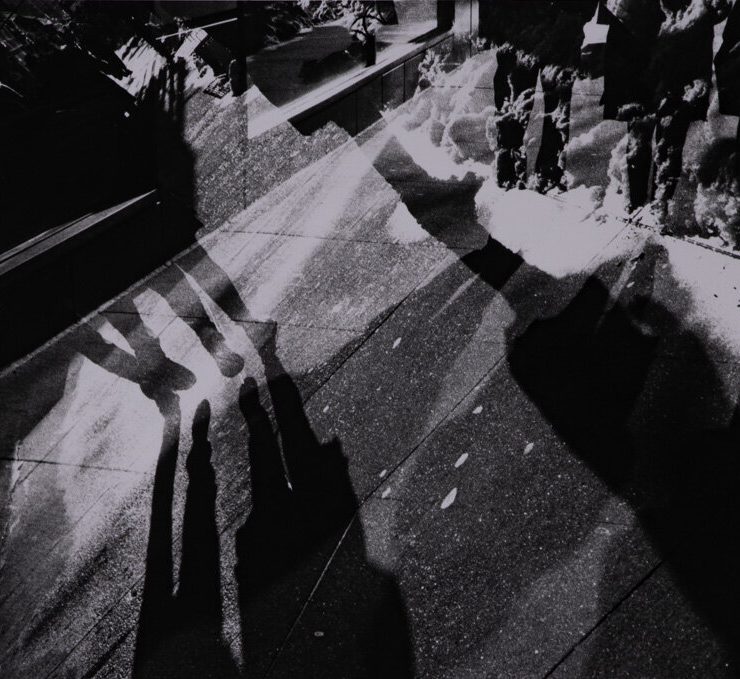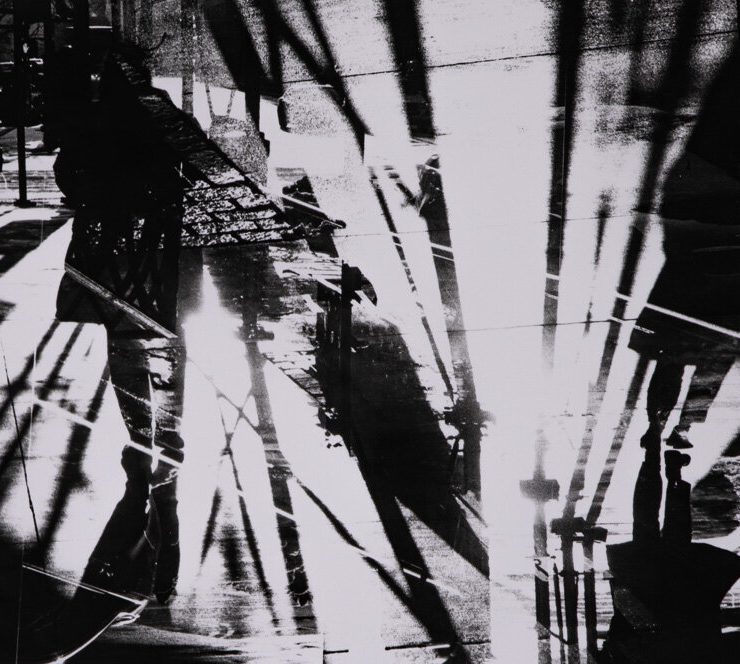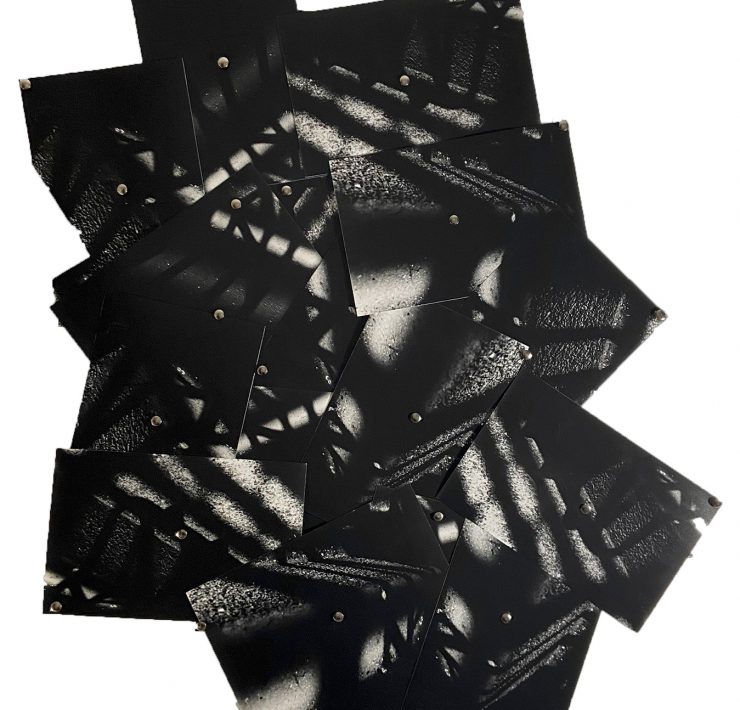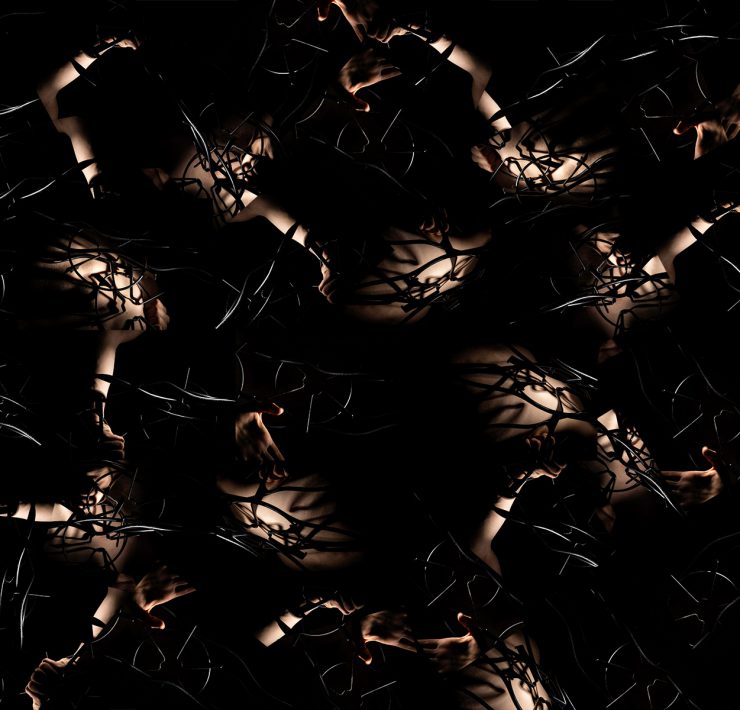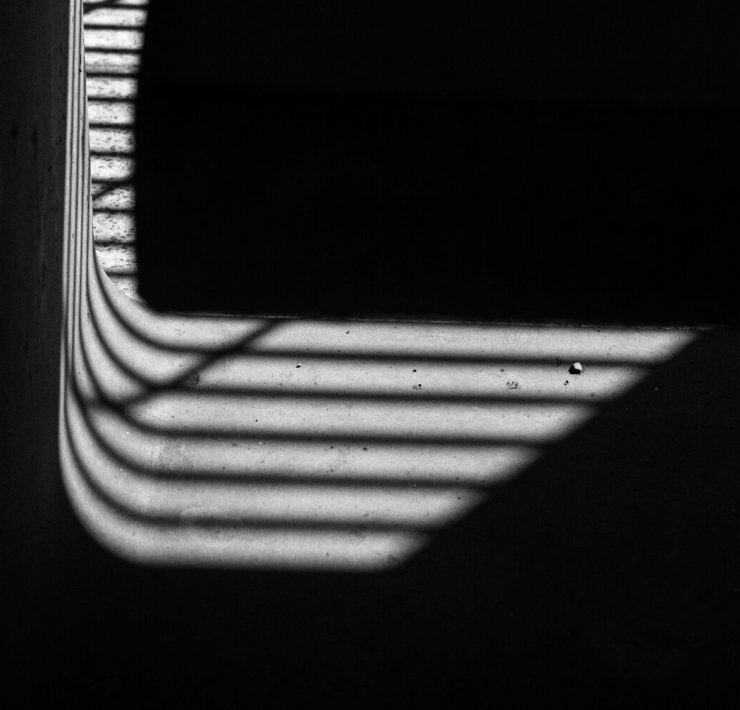The photographer’s studying at School of Visual Arts in New York. Here, he talks about abstract art, his creative routines, learning to trust his instincts, and why taking that leap feels like you don’t know what you’re doing.
The story of how Jake Dylan came to be an art photographer is pleasantly fluid. It all started when he was in high school, though a career in acting was more on his radar back then, taking him to the Stella Adler Studio in Manhattan. His grandfather, a painter and a photographer, and plenty of museum visits built within Jake a natural affinity towards art as a whole, prompting him to choose between acting and visual art when a fork in the road appeared. So he took a gap year to “do something totally different” and clear his head.
Turns out, nothing else was “as mysterious as photography,” piquing his curiosity down a path where “the answer is ten more questions.” To Jake, this was (and still is) a good sign. Full of wonder, he’s using photography to strip away the meaning of objects and invent new worlds of form and light. It’s been an instinctual and stirring process, teetering on the edge of abstraction and realism. Jake’s output brims with his immeasurable love for creating. In his words, “as soon as you think you know the answer, create more and keep questioning.” And that’s it, he’s hooked.
It makes sense when you consider that Jake’s entry into the art world was so organic, with the practice of interrogating “truths” being his favorite part. On an aesthetic level, Jake’s interested in making photos of line and light, which is often the fundamental premise that leads him to montage. He’s fascinated by shape and composition, and I get the sense that an abstract detail can suggest far more than a literal portrait of a subject for him. When I ask if he’d like viewers to feel the same vivid wonder he feels, he leans into the camera and shouts out, “Yes!”
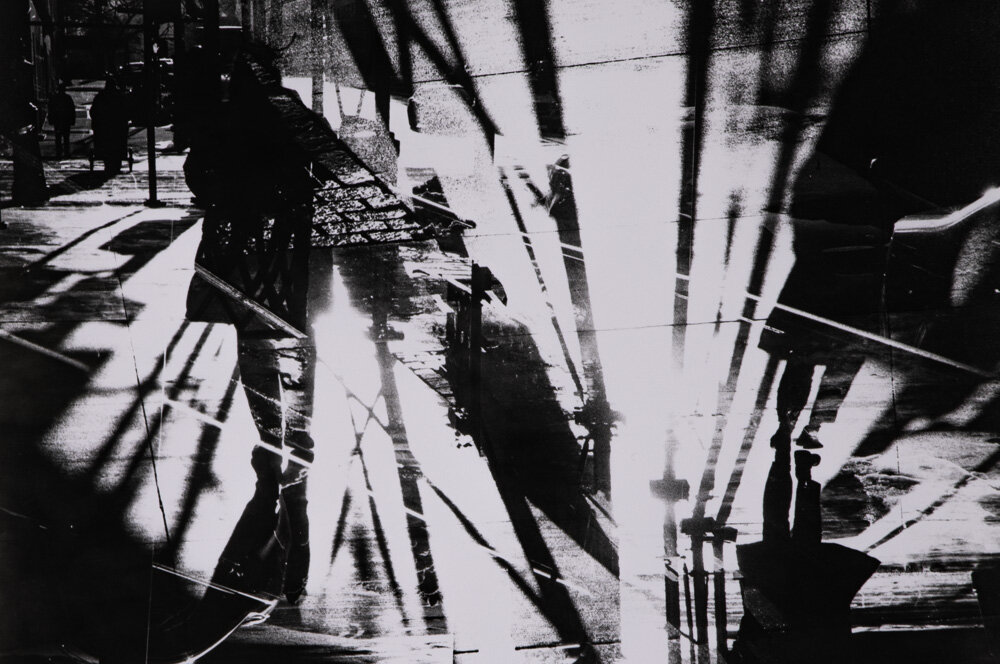
The Daring: Were you early on encouraged into the arts?
Jake Dylan: Yeah, I’m very lucky in that sense. Art was always welcome in my home and on the walls growing up. My story is one that many gay boys share…you go through soccer, go through Little League, and then find the arts. It’s like, Oh, that’s what I’m supposed to be doing. I very much had that.
Because of my grandfather, I became interested in photography. My parents gave me a point-and-shoot Canon when I was seven years old…that was all I wanted for my birthday. I don’t even know if it’s still around anywhere. It was digital, and so I was able to start with it right away.
TD: And what comes up for you now, as you move between film and digital?
JD: I’m reading Photography Is Magic by Charlotte Cotton. She mentions how there’s this new generation of image-makers without connection to analog photography. That’s interesting because I took a traditional black and white film class when I started studying photography in high school. I was fourteen years old, and up until this year, I was married to black and white film. This year, something in me sensed it was time to go outside of what I’ve been doing for so long. I can always go back to black and white film. But switching to digital felt like taking off a ball and chain.
It enabled me able to do more work and explore more ideas. There’s no dial counting up to 35 right next to the shutter release anymore. This has a large impact in the studio, where there’s more to make than to find. Also, each piece of equipment speaks a different language. The difference between digital and film language is not hierarchical, but limiting myself to one blinded me to the possibilities of the other. For example, I used to think of abstraction in photography as something that sang in shimmering black and white. I still do. But, the curious line between fact and mystery in my work is served so well by the presence of color.
“Thinking about an artist as one who makes things, the difference between taking a picture and making a picture is something I contemplate a lot. Abstraction is more about making something as opposed to commenting on what’s already there.”
TD: Speaking of mystery, was it part of your fantasy life as a child?
JD: I loved mystery stories as a child, and that put gasoline on my already curiously-natured fire. Growing up in a family that appreciated art led me to mix my natural curiosity with art. It made me want to question and deconstruct visual objects. I’m so grateful my parents took me to museums and exposed me to abstract art. Reflecting on it now, I saw it as art about art itself. That’s how it functioned for me.
And thinking about an artist as one who makes things, the difference between taking a picture and making a picture is something I contemplate a lot. Abstraction is more about making something as opposed to commenting on what’s already there. In that high school film class, I had an assignment called “Shadows and Reflections.” I never left that. I thought then, Oh, that’s what I’m here to do. So yeah, looking at things and making abstract things out of them helps me see beyond my limitations.
TD: So, how does it feel to look through your viewfinder?
JD: Like I’m painting with the world, and I’m saying, “Okay, I want the line coming here. I want this thing here…that there.”
Which then, speaking of viewfinders, I question the use of a rectangle. The viewfinder is an extension of painting and its long history…and, going back to Charlotte Cotton, it begs the question of why we live within that canon. So, I’m thinking a lot about composition, form as content.
TD: How did that start? When did you notice that form was the exciting part for you?
JD: I trace it back to my first year at School of Visual Arts. I was fascinated by the shape of things and the way they look, not what they mean. A teacher said that photographs are intrinsically narrative unless they’re abstract. So, I said, Okay, I’m going to make abstract ones then, because my focus is on light as a subject. Light is abstract, and it’s hard to talk about it at all, let alone in photographs. So, that planted the seeds for wanting to look at forms.
And this past year, I took a class on existentialism, which significantly influenced how I now question objects and their purpose. Take a glass with water, for example. At some point in our lives, somebody said, “This is a glass, and this is water.” But, what are these items if words don’t label them? When I view objects through this lens, it’s not about their identity. That’s why I like exploring things through photography because it’s a different way to pick at something. It’s visually and phenomenologically picking at something, as opposed to analytically picking at it.
TD: You’re on to something…stripping away function is provocative because we tend to appreciate things for their utility, whatever that means. And as you describe your process, it sounds like painting.
JD: Yeah. I’m painting with light on film instead of paint on a canvas, which goes back to making versus taking. I’ve always felt like I’m making something, but I’m using a camera to do it instead of clay or an easel and a canvas. I’ve never felt connected to documenting or even capturing.
Another reason I stayed with black and white film is I went into the darkroom and made a physical object. For a while, that was important to me. Now I create digital objects, but I have the conceptual foundation to understand that I am still making something.
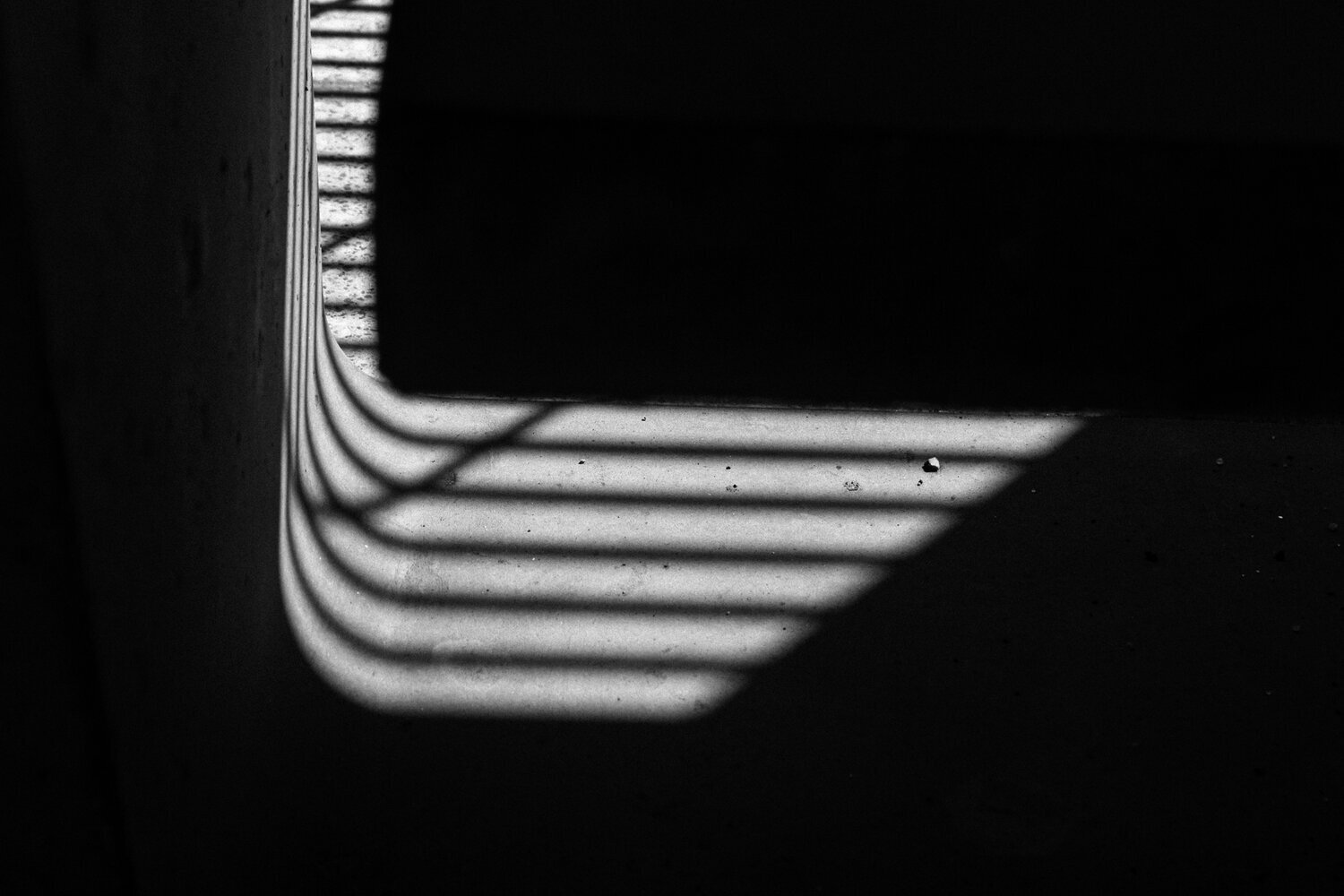
TD: Being in the darkroom, listening to music, and printing away…felt cacoon-like for me. What’s the darkroom like for you?
JD: My professor Abby Robinson said once that you don’t think about it until you realize it, but the darkroom is one of the few places in this world where you go to only do one thing, and you cannot do anything else in there. You can’t eat. You can’t be on your phone. You can listen to music, but your full attention needs to be on printing. So, it’s a meditative practice. I take pride in doing it because it’s not easy and requires a lot of effort and devotion to get good at it, like any craft.
Up until January 2021, I was printing every week. I was making pieces for these massive wall collages. It sounds like a lot to say that I was making fifty prints every time, but that’s because I’d find the right settings and then shoot off ten runs of the same thing. So, my time in the darkroom became quite factory-like, which may have been why I was ready to shift to digital. If I were to start using film again, it would be different because I would be making pictures of other material. The darkroom is such a cathartic place. It’s a part of photography that has dissolved a bit, and it’s going to keep dissolving as time goes on, which is sad.
TD: Coming to your visual vocabulary, what led you to collage?
JD: Oh, a fascination with shaded scenes. Often, my street pictures were of light going through scaffolding. So, my interest was in making this garbled…visual cacophony is the word I like for it. And then, I noticed the images had linear elements from edge to edge. I wondered what would happen if I connected them. So, the collaging came after the pictures.
Another thing I like about collaging prints is they are unique, which goes against the reproducible nature of photography. I love the idea that there’s only one of this, and that’s it. I mean, they’re not on my walls anymore. They only exist in photographs I’ve made of them.
TD: And how does chiaroscuro come into play?
JD: Light with strong contrasts draws me in. What I’m creating is so graphically driven. I’ve always liked photographing at different times because light does different things depending on the time of day. I can walk the same route at midnight, 9:00 in the morning, noon, and then 6:00 and get distinct pictures every time. I shoot on the East side in the morning and the West side in the afternoon because that’s where the light is. I follow the light.
TD: To make anything is an act of hope, abstract art included…what’s your relationship with the unknown?
JD: It is so hard to live in the unknown. My challenge is to be patient with myself and with my work, even though I want to know what it’s all about here and now. Teachers have said that I have a gift for being prolific…and they’ve encouraged me to trust it, to keep going.
It feels like I’m in this place of constant turmoil of, “What am I doing?” But really, it’s okay that I don’t know. I am coming to terms with the idea that I make art to make art. If I do it for any other reason, I’m going to be dissatisfied with the outcome. But if the only reason I’m doing this is for the pure sake of doing it, then it doesn’t matter what I’m making. I can release into that place of, “What do I feel like making?”
So, I write specific affirmations every day. One of them is, “It doesn’t matter why you’re doing it. Just keep doing it.” I have been in therapy my whole life, and it’s a significant influence on my practice. I’m very aware that if you don’t know what to bring up, your subconscious will. So, I encourage myself to keep doing things. Afterward, I can look at them and see what happened.
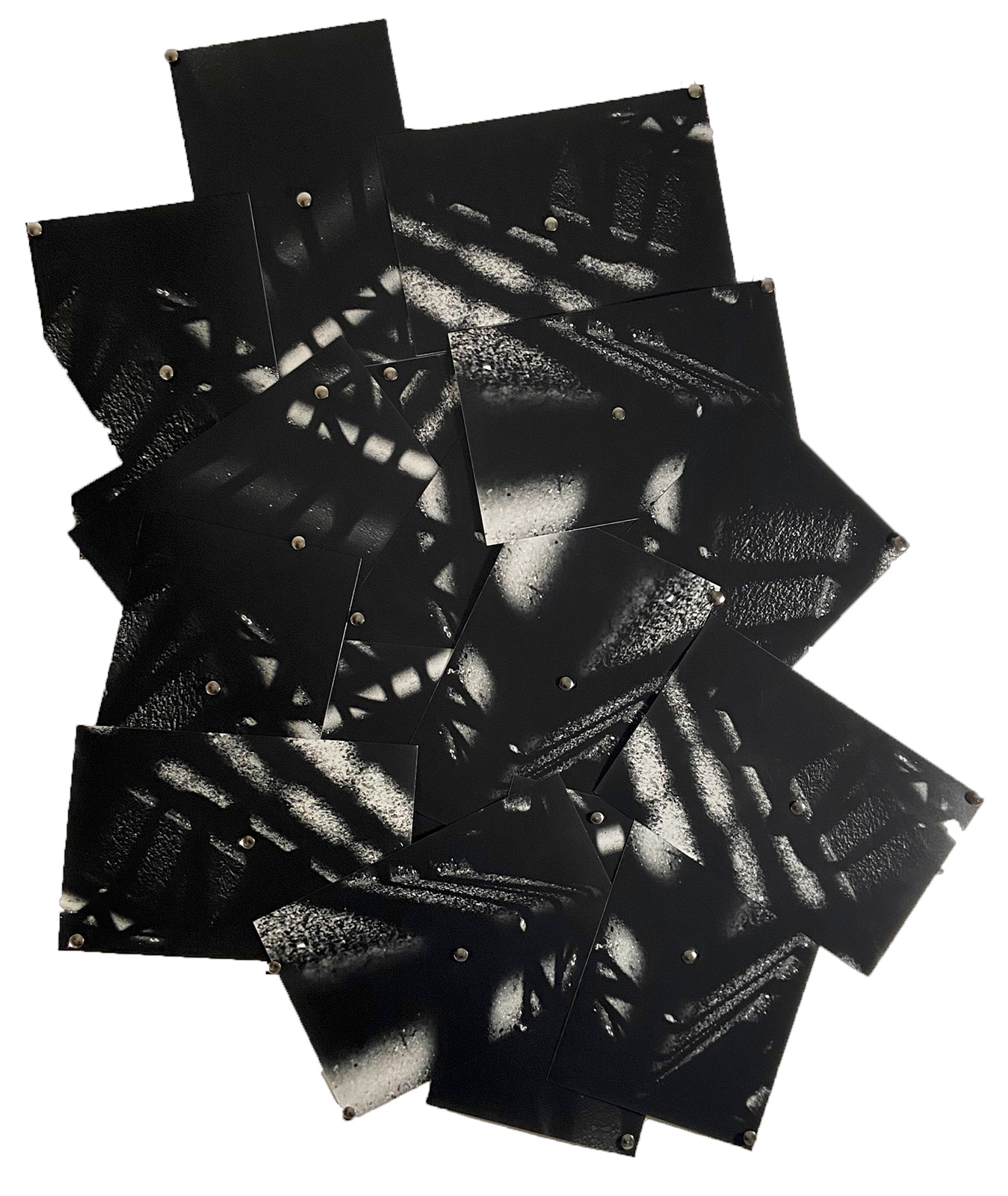
TD: That’s beautiful. How did it feel to create Building Blocks? (above)
JD: This print collage might be the first one I ever did. It’s three feet by four feet. I photographed a stoop, a stoop with railing coming up off of it. The light shines on it, making these bends. Anyway, I hated it as soon as I did it. I thought it didn’t look cohesive. I thought it looked messy and not put together, but I didn’t take it down off my wall. I put it there, and I left. I do that a lot. Whenever I put work on my walls, I leave it as is for a few days. Otherwise, I might lose something.
If I had taken this collage down, I would’ve lost something because now I see so much connection and movement within it. There’s a triangle that forms right in the center. I like that it’s larger than one picture, and it naturally grew that way. Another quality I think about is otherworldliness, which plays out here even though photography is usually the medium of non-abstraction, of real things.
TD: I see what you mean. I wonder if I could walk into this space and find my way.
JD: Yeah, yeah, I like that. What I take from that is that it’s almost like walking without any ground beneath you.
TD: Yes, that’s precisely it. I don’t have a sense of where the horizon is at all. I’m tumbling through this space.
JD: That’s super.
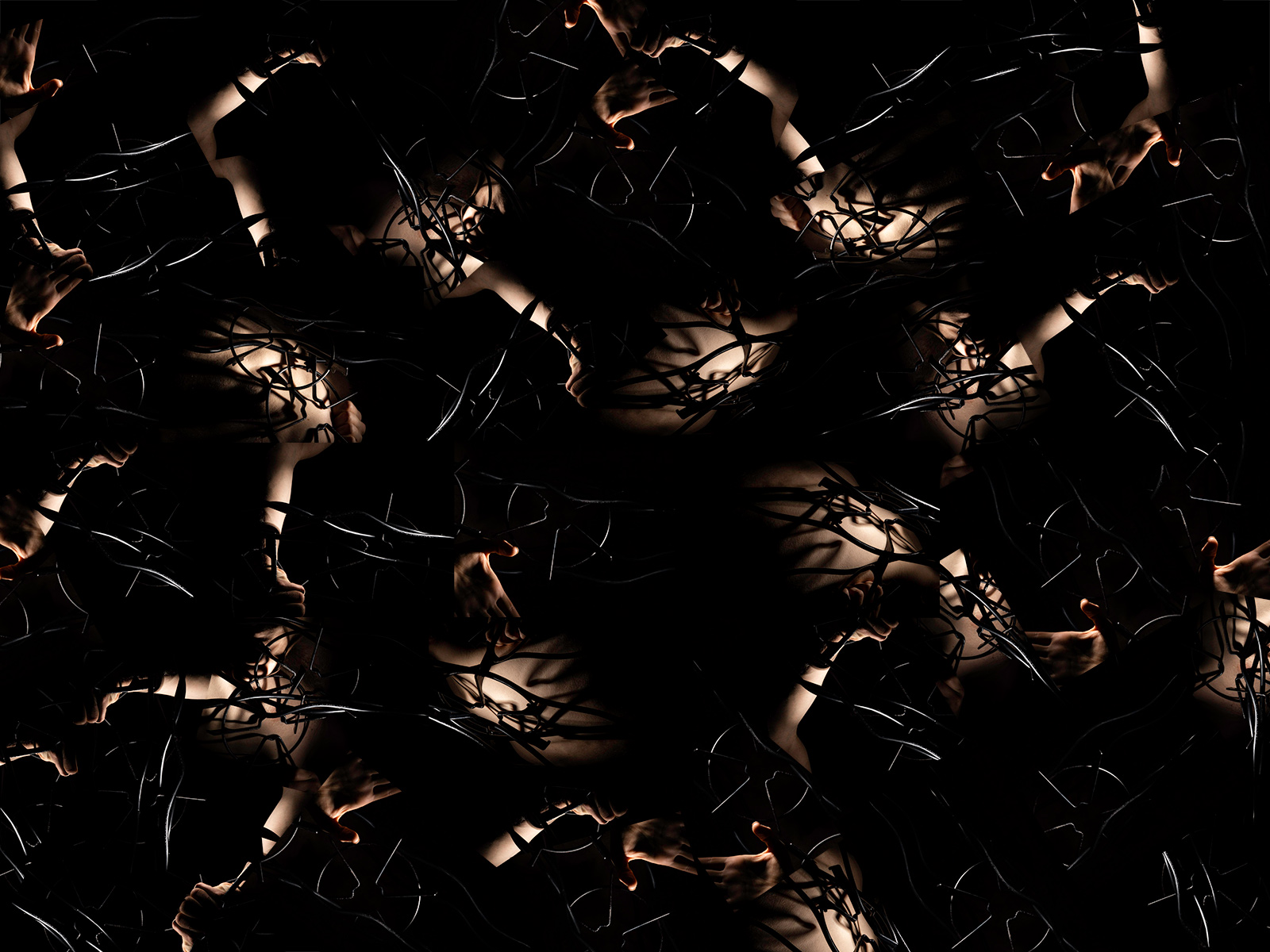
TD: Let’s talk about Body Work (above)…you’re playing with texture and color in a different way here. What came up for you?
JD: This was the beginning of working in the studio…pushing even more towards making instead of taking. It’s interesting that when you’re on the street, the universe will give you something, or the universe will not give you something. But when you’re working in the studio, there is no universe. You are the universe. It’s all got to come from you unless you have a client there to tell you what to make.
So, what comes up is my strong interest in linear forms. I worked with different geometric objects and projected their shadows onto walls and the floor. It felt hollow. So, I put my body into it, because why not? I wanted to create an amorphous experience. Yes, you can see skin, but is it a body?
TD: Right, this image is not purely abstract, and you can sense there’s a body. Realism is trickling in. Where do you hold that line? Does it get blurry sometimes?
JD: It does! In my first year at SVA, I wanted to go for full geometric abstraction. Abby Robinson would say, “Well, pull back a little bit.” I appreciate that now because seeing this image with hands and arms opens new questions. What is a body? What is a hand? An arm? That’s why I want viewers to get in close for details and see the whole thing from far away. When you see it far away, you’re not sure of what you’re looking at.
TD: Speaking of which, how do you think about scale for a piece like this?
JD: So that’s another thing. I want to present it in a large format, four by five feet, for the effect of seeing it as an abstraction from far away and the individual details from up close. Some details are subtle and need closer inspection. When you zoom in, you can see hands and arms combined with inorganic materials. At the bottom center, there are two hands about touch, but there’s a tiny bit of space between them.
You tend to wash over the whole thing and get lost in its abstraction when it’s small on a screen. That dynamic of seeing the amorphous and the closeup is important to me, which is hard to achieve online. I’m thinking about installation in these terms. If I were to put two tape lines on the floor to note viewing distances, would that give viewers too much instruction?
“The struggle with intuiting is that it doesn’t feel like you know what you’re doing. But it wouldn’t be art if it wasn’t like this. So, I try to let ideas seep in and keep going.”
TD: What would you like viewers to take away from your work?
JD: I want to make people curious…I don’t care about what. I want to pose a big question mark for the sake of other question marks. When my images spark questions about what a body is or something more mundane, we’re engaging in critical thinking. There is a general shift away from curiosity. I see people accepting things without questioning why they are that way.
My education in public school focused on getting good test scores. I was the kid who raised a hand after every lesson and asked why. I would ask anything from, “What is gender?” to “What is glass?” to “What is a cup?” We come into the universe without choosing when in history, who our parents are, where in the world we are, but we have this gift of consciousness that no other creature has. We have the gift of knowing that there are tiny cells with mitochondria and a nucleus at the heart of everything. We can be that curious and go that deep to explore the unknown. And yet, people go to school to get a job that’s going to make them money.
TD: Why do you think that is?
JD: I mean, it’s capitalism. We’re a consumer society in late-stage capitalism. It’s undeniable. Clearly, the accumulation of wealth to buy experiences is different from that of buying objects. But overall, our culture sways towards getting a good job and accumulating wealth resulting in materialism. It’s led to a culture that isn’t curious. It’s very showy and Instagrammy.
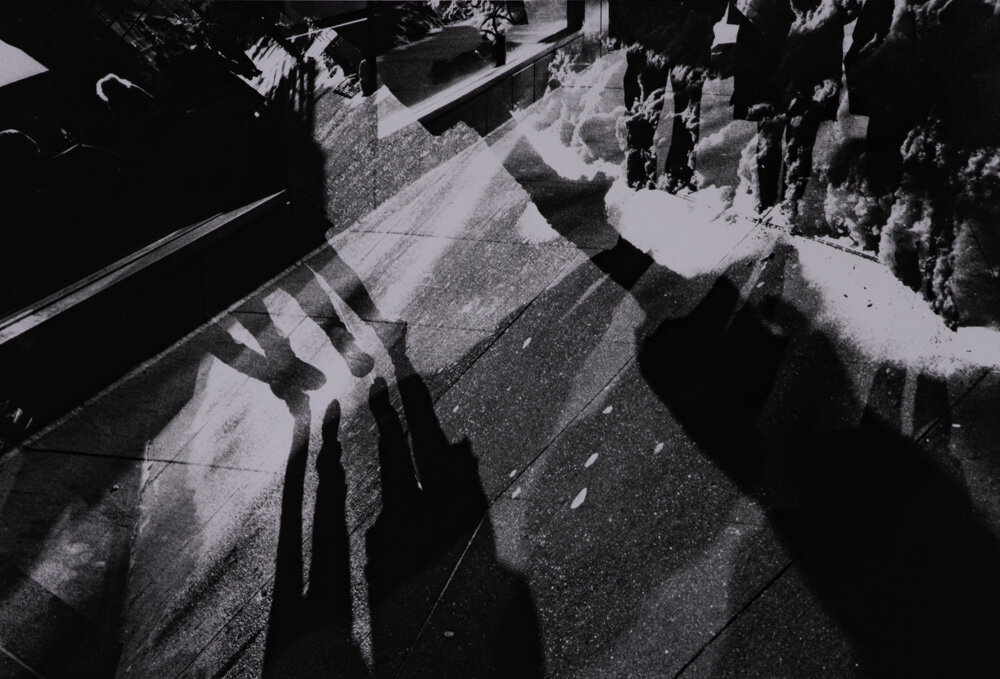
TD: How do you see your place in all this?
JD: I have an aunt who said, “If you want to buy a Mercedes and you can’t buy a Mercedes, you’re going to be miserable. But if you don’t want to buy a Mercedes and you don’t buy a Mercedes, you’re fine.” So, my long-term goals don’t have to do with what material objects I can afford. If they did, I would have gone to school for finance, and I would be a stockbroker. They have to do with my ability to continue making, and my art practice is not about commercial success or fame.
It’s best when one understands that when going to art school. The purpose of my degree is to think and take pictures. Unless you are the lucky one, you’re not going to be paying your rent and buying your food off of the art you make. You’re going to have to have some other way to bring money in while you also make art. So, the ultimate question is not, “How are you going to make money?” The question is, “How are you going to sustain your practice?” I’ll find a way.
TD: Interesting to think about creative sustainability as the “art world” is now called the “art market.” How do you think about your pieces in terms of selling them?
JD: I was just talking with another artist about this. Of course, my dream would be every week for the gallery to call me and say, “Okay, you sold five photos. Here’s your check.” What a dream. But, when you assign a monetary value to art, the person who can afford to buy it is not looking at it thinking about the art. They’re thinking, “I spent $40,000 to buy this piece of art.”
Yes, it would be an insane level of accreditation to be represented by David Zwirner or Yancey Richardson. Still, a part of me rejects that because the purpose of a gallery is not to display art for pleasure. It’s to sell art. As well, who does and who doesn’t get their work shown in galleries? When and why? I have to step back and realize that I’m not making art with the hope of earning gallery representation someday. If that happens, okay. If it doesn’t, okay. I’m making art for the sake of making it.
TD: Who are you leaning on for creative support?
JD: Definitely teachers. Abby Robinson, Elizabeth Bick from SVA. They are the two biggies right now. Anytime I’m in a critique, I like to have a piece of paper with me and write everything relevant. And then, I wait and see if anything they said stuck in my head without looking back at the piece of paper. I go back to it and read what they said a few days later.
I’m conflicted when I don’t act on feedback. I slap myself on the wrist for not taking it all on, and I pat myself on the back for continuing to trust my instincts. Of course, the struggle with intuiting is that it doesn’t feel like you know what you’re doing. But it wouldn’t be art if it wasn’t like this. So, I try to let ideas seep in and keep going.
This conversation has been edited and condensed for clarity.
Jake Dylan lives and explores in New York and studies photography at the School of Visual Arts. Jake’s work has been featured in The Visual Opinion. View more at jakeadylan.com.


